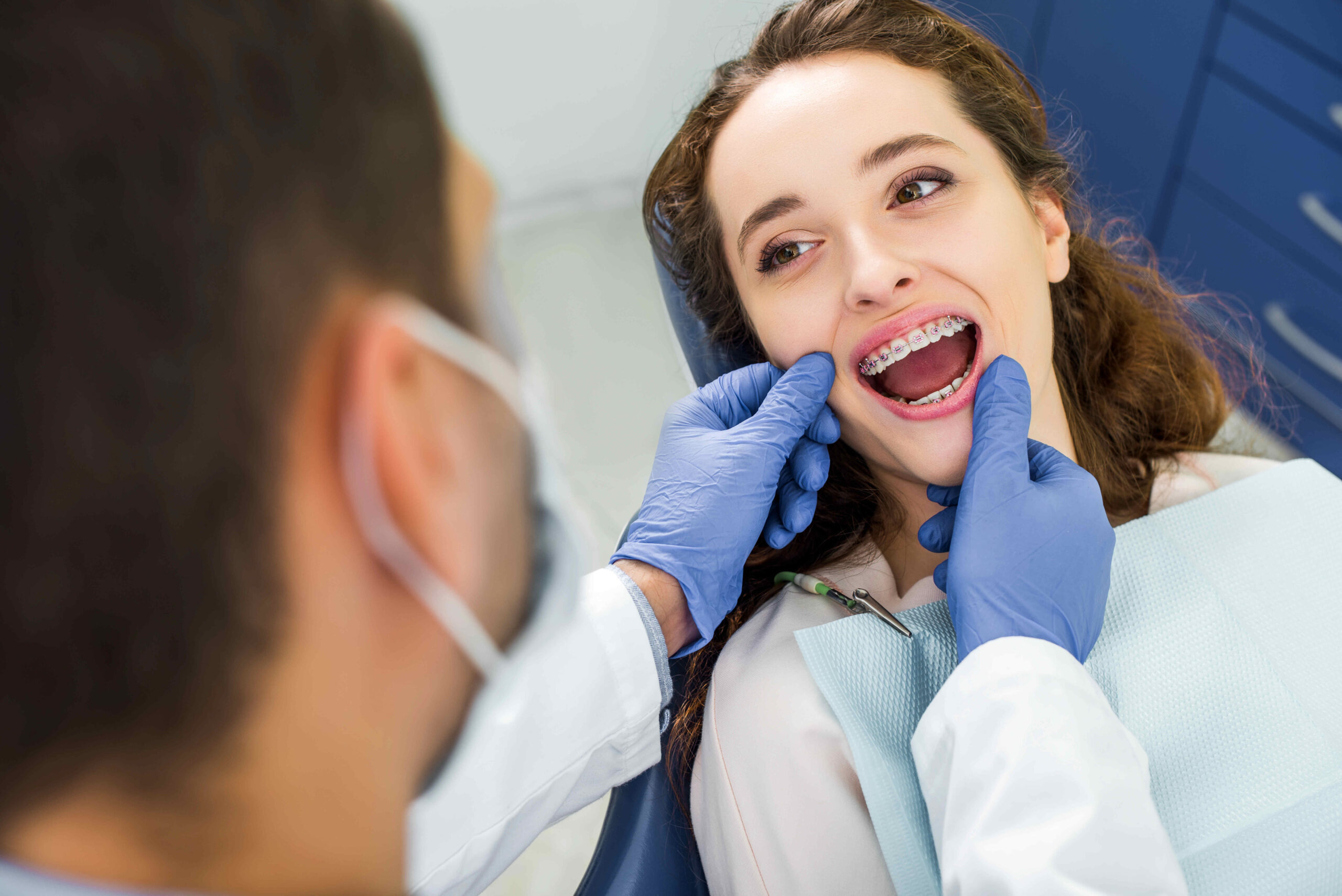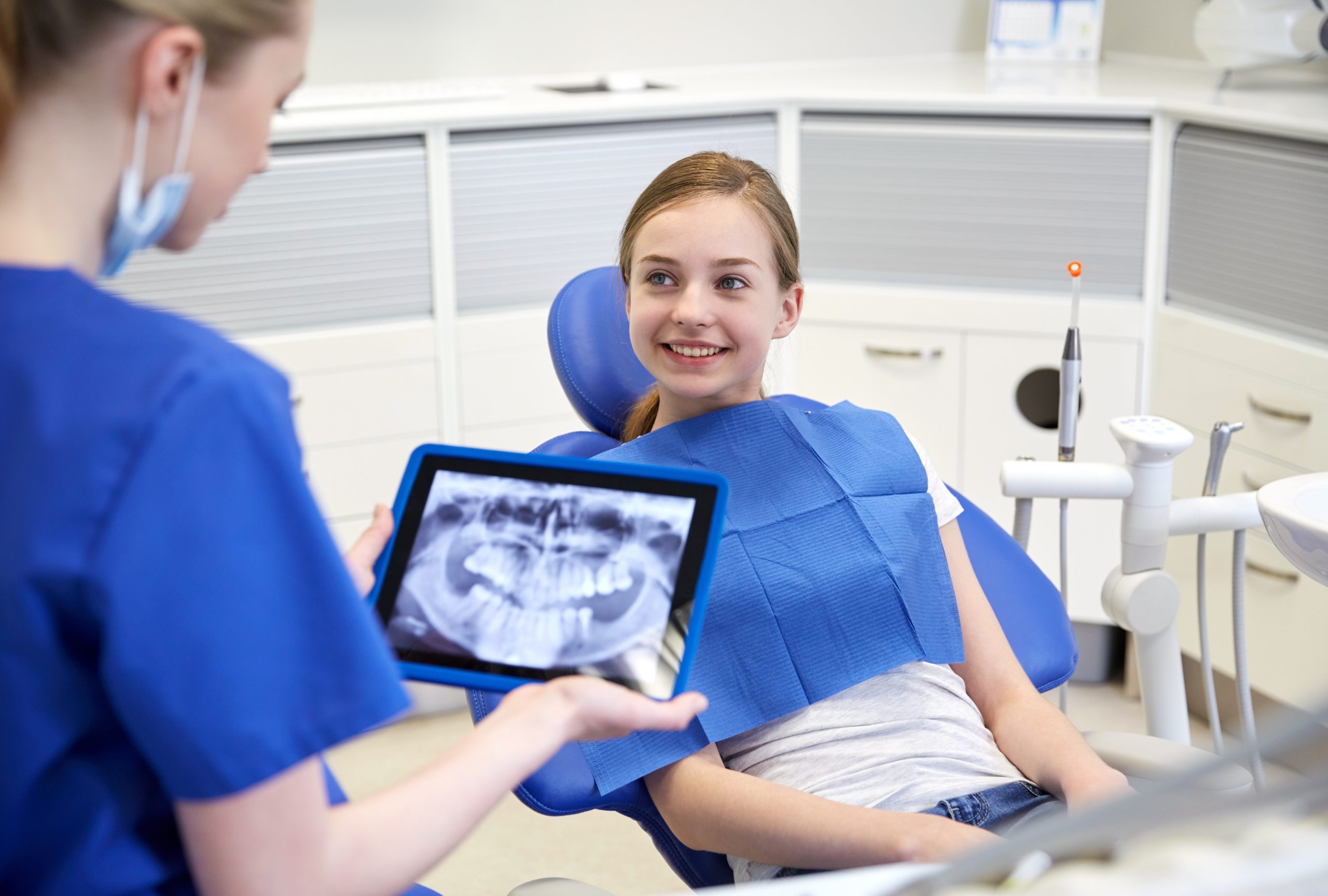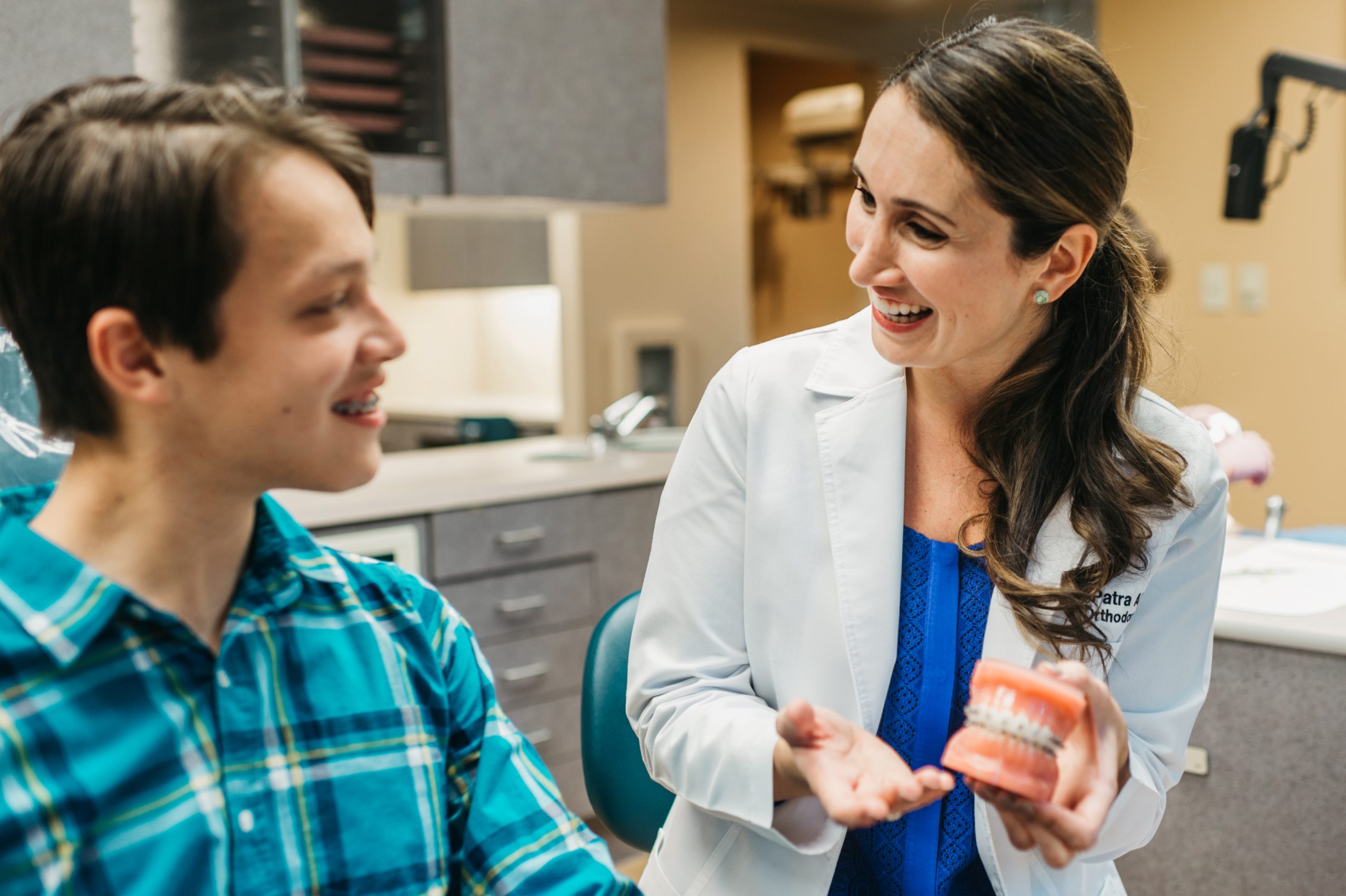Starting orthodontic treatment is an exciting step toward a healthier, straighter smile. At the same time, adjusting to braces often comes with new routines, small challenges, and plenty of questions. Knowing what to expect during the first year can help patients — and parents — feel prepared and confident about the process.
From the initial adjustment period to regular check-ups, this guide covers the key stages of your first year with braces.
The First Few Days
When braces are first placed, patients usually experience some pressure as the teeth begin shifting. This is normal and typically lasts only a few days.
- Mild soreness — Teeth may feel tender when biting or chewing. Soft foods like mashed potatoes, smoothies, and yogurt can help.
- Irritation — Brackets and wires may rub against the cheeks or lips. Orthodontic wax can provide relief.
- New routines — Brushing and flossing take more time but quickly become part of the daily schedule.
Most patients adjust within a week, and the initial discomfort fades as the mouth gets used to braces.
The First Month
The first month sets the foundation for success. Patients return to the orthodontist for a follow-up to check progress and make minor adjustments.
Expect to:
- Learn new eating habits — Avoid hard, sticky, or crunchy foods that could damage braces.
- Practice oral hygiene — Brushing after meals and using floss threaders or water flossers becomes essential.
- Notice small changes — Teeth may already start looking different after just a few weeks.
Regular Adjustments
Throughout the first year, patients typically visit the orthodontist every 6–8 weeks for adjustments. These visits are important for ensuring steady progress.
During adjustments, the orthodontist may:
- Tighten wires — To apply new pressure and continue tooth movement.
- Replace elastics — Colorful bands hold wires in place and can be swapped at each visit.
- Provide new instructions — Such as wearing rubber bands to correct bite issues.
Mild soreness after adjustments is normal and usually lasts a day or two.
Common Challenges During Year One
The first year of braces comes with a learning curve, but most challenges are temporary.
- Soreness — Especially after adjustments, managed with soft foods and over-the-counter pain relievers.
- Broken brackets or wires — Usually caused by eating restricted foods; these can be fixed at the orthodontist’s office.
- Food getting stuck — A common frustration, but tools like interdental brushes help keep braces clean.
- Staying motivated — Progress takes time, so encouragement from parents or peers can help younger patients stay positive.
Milestones to Celebrate
Orthodontic treatment is a journey, and celebrating small wins keeps patients motivated. In the first year, you may notice:
- Visible changes — Teeth often look noticeably straighter within a few months.
- Improved bite function — Chewing and speaking may become easier as alignment improves.
- Personal growth — Learning responsibility through daily care routines.
Recognizing these milestones helps make the process feel rewarding.
Tips for Success During the First Year
Sticking to healthy habits ensures the first year with braces goes smoothly.
- Maintain consistent oral hygiene — Brush after meals and floss daily to avoid plaque buildup.
- Wear elastics as instructed — They play a critical role in correcting bite issues.
- Protect your braces — Always wear a mouthguard when playing sports.
- Stay positive — Remember that every day with braces is one step closer to a beautiful smile.
What Happens After the First Year?
By the end of the first year, patients have usually adjusted fully to life with braces. Teeth are noticeably straighter, and bite corrections are well underway. Treatment time varies, but most patients wear braces for 18–24 months total.
The second year often brings continued fine-tuning and final adjustments that perfect the smile.
Take the Next Step Toward a Healthy Smile
The first year with braces is a time of adjustment, progress, and exciting changes. While there may be challenges, the rewards far outweigh the temporary inconveniences. At Gig Harbor & Tacoma Orthodontics, Dr. Patra and our caring team guide patients through every step of treatment — from the first appointment to the final day braces come off. Schedule your free consultation at our Gig Harbor or Tacoma office to start your journey toward a confident smile.



